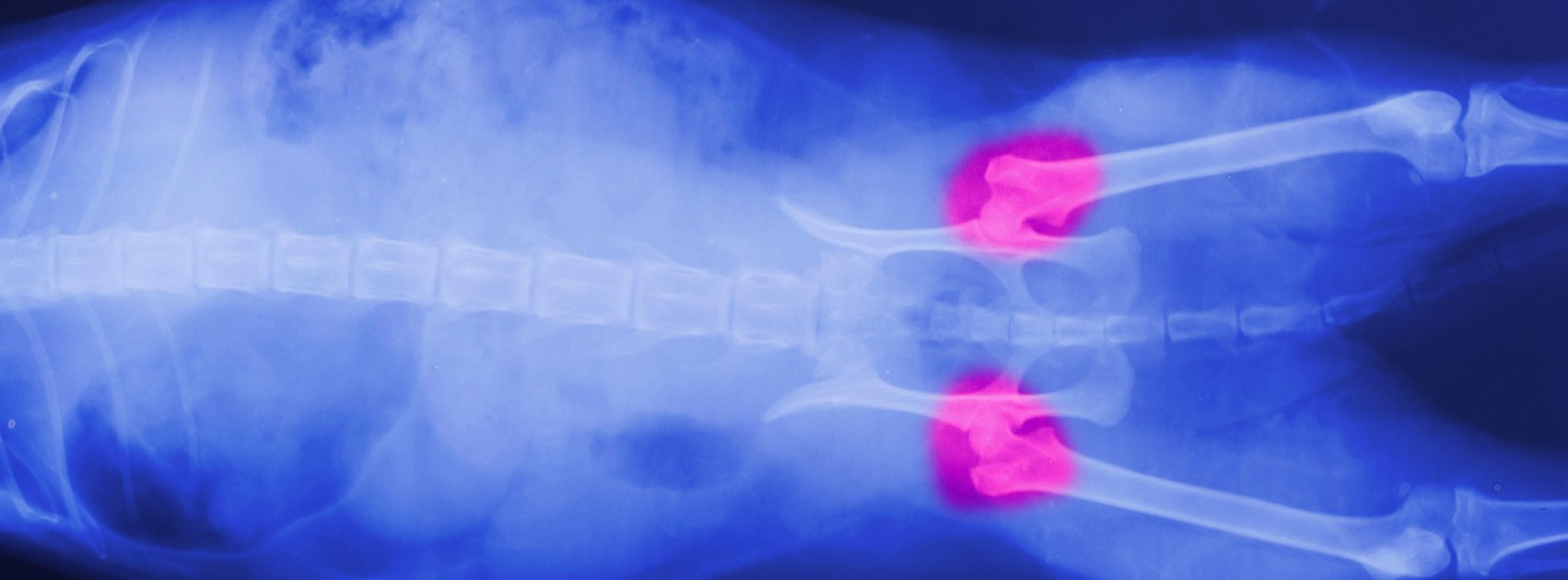How to Determine If Your Dog Should Have a PennHIP Evaluation
Have you ever wondered whether you should have your dog checked for hip dysplasia or osteoarthritis? While hip dysplasia usually affects larger dogs, even small dogs can be afflicted with the painful condition.
One of the best ways to determine whether your dog has a hip problem is called the PennHIP method. Read on to find out why you might consider getting a PennHIP evaluation for your dog, what the PennHIP method is, how it works, and how to find a certified provider.
Signs to Look for
Hip problems are generally determined by the laxity (or looseness) of the hip joint. This requires a professional evaluation, such as PennHIP, to gauge, but there are some signs that your dog might be having hip trouble. They include the following:
- Stiffness of the joints, which can be a sign of osteoarthritis, particularly in older dogs
- Difficulty getting up from a lying position or difficulty going up and down stairs
- A swaying gait or running without alternating the back legs (bunny-hopping)
- Limping or otherwise indicating that it’s painful to walk
- Pain when you touch the dog’s hips or back legs
While some stiffness can be normal as a dog ages, if moving seems to be painful or if it’s occurring in a young dog, talk to your vet about having a PennHIP evaluation done.
What Is the PennHIP Method?
The PennHIP method is a method of evaluating the laxity of the hip joints to rule out or confirm conditions such as osteoarthritis and hip dysplasia.
These can be debilitating and painful, so it’s important to know whether your dog is affected. In addition, any dog that will be used as breeding stock should have his hips examined to avoid passing on genes that support hip problems.
For the test, the dog is anesthetized (to prevent movement) and three radiographs are taken from three different angles. Those films are read by veterinarians trained in the method and analyzed through a medical database. From there, the dog’s hips are rated on a scale from 0 to 1, with a lower number (closer to 0) indicating tight hips and a higher number (closer to 1) indicating a lot of laxity in the hips.
How Much Does PennHIP Cost?
According to the American Animal Hospital Association, PennHIP costs between $200 and $400. This includes the anesthesia and the cost of the x-rays. Sometimes, dog owners wonder whether it’s worth it to spend a few hundred dollars getting their dogs’ hips analyzed.
If a dog is prone to hip dysplasia or showing signs of the condition, confirming or ruling it out is helpful in creating a treatment plan. Also, keep in mind that while OFA certification might look less expensive, the fee does not include the vet fees, the radiograph, and any sedation that needs to be used for some dogs.
With PennHIP, three films are used, rather than one, and the veterinarian has specialized equipment and training that is not necessary for the OFA method.
How Long Does It Take to Get PennHIP Results Back?
The time that it takes to receive PennHIP results can vary, but the average is two to three weeks. Your vet will get a copy, and you will get a copy. Your vet can explain the results to you.
Many people wonder what the numbers mean. The higher the number, the looser the dog’s hip joints are. This means that they could be more likely to develop degenerative joint diseases such as osteoarthritis or hip dysplasia.
You can ask your vet, “What does PennHIP 70 mean?” or “What does PennHIP 90 mean?” He or she will be able to explain to you how likely it is that your dog will develop a problem. Dogs with a reading of 0.3 (PennHIP 30) are at risk of developing a degenerative joint disease of the hips.
If your dog has a reading higher than that, talk to your veterinarian about signs to look for that the dog might be developing a problem. Treatments might include lifestyle changes such as exercise or dietary supplements, antioxidants, and pain relievers. In severe cases, surgery might be necessary.
How Do I Find Someone Who Is PennHIP Certified?
You can use the Antech Imaging Services search page to find a veterinarian in your area who is PennHIP certified. Unlike OFA, which can be used by any veterinarian who possesses an x-ray machine, only professionals who have undergone extensive PennHIP training are certified to offer this service in their practices.
By choosing a PennHIP-certified veterinarian, pet owners can feel confident that the PennHIP evaluation will be performed correctly and that results will be entered into the database, further improving the method’s effectiveness.
Additional resources:
1-TDC Oral Health + Mobility Support for Dogs

$32.00
Keep your pet Happy, Active & Comfortable from Head-to-Tail with 1-TDC. This unique supplement is SO effective that it is recommended by TOP Veterinary Experts worldwide to maintain and improve your pet’s health in 4 important areas: Oral Health….… read more









